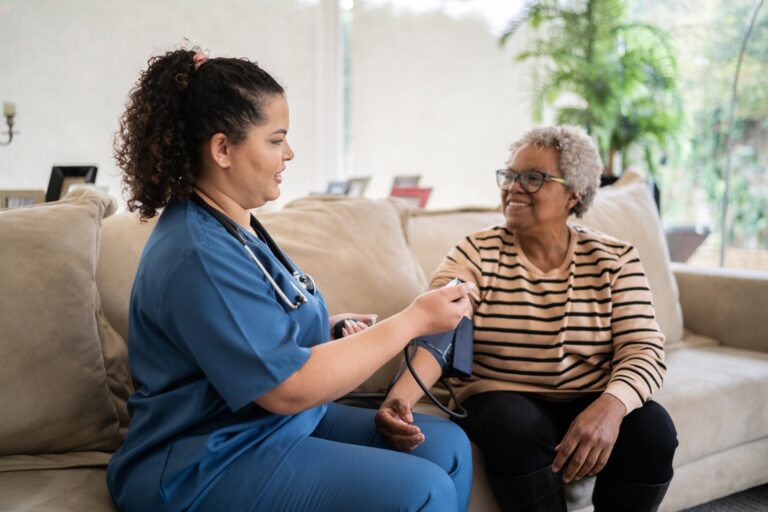
Leveraging Technology to Reduce Post-Acute Care Re-hospitalizations: A Case Study
The effective management of increasingly complex patients in post-acute care plays a pivotal role in improving patient outcomes and reducing re-hospitalization rates. With advancements in vital signs monitoring, healthcare providers have powerful tools at their disposal to address the complex needs of patients transitioning from acute care settings to post-acute care facilities. Technology can make a significant difference as illustrated in the following patient story:
“A 77-year-old female presents to the post-acute care facility with pneumonia and a confirmed cardiac history with multiple co-morbidities. At admission, the patient presents with sinus tachycardia with a consistent heart rate around 110 BPM and tachypnea with a breath rate around 32-34 BrPM. After being discharged from the hospital for pneumonia treatment, she was transitioned to a post-acute care facility for continued recovery and rehabilitation.”
Scenario 1: Continue Managing without Vital Signs Monitoring
Using traditional spot check vitals, warning signs of this asymptomatic patient could be overlooked. Subtle changes in her health status could go unnoticed until they escalate into more serious complications. The harsh reality is, of the 1.5 million residents discharged each year to post-acute care facilities, 255 are either readmitted to acute care or die within 30 days.1
Clinical Event:
Unfortunately, overnight the patient acutely converted into unprecipitated supraventricular tachycardia with a heart rate that jumped from 109 to 176 BPM in between spot check vital rotations. Without timely corrective action, the patient’s SVT persisted, and converted into new-onset atrial fibrillation with rapid ventricular response.
Outcome:
Subsequently, the patient was readmitted back to the hospital after the event. The patient’s post-acute care team lacked the tools needed to proactively identify patient degradation signs and take the measures necessary to optimize her recovery and minimize the likelihood of rehospitalization that occurred in part with her cardiac complications.
Scenario 2: Continue Managing with Vios Vital Signs Monitoring Technology Implemented
In contrast, if the post-acute care facility had utilized advanced technology for continuous vital signs monitoring from Vios Medical, the result would have been a positive patient outcome. Continuous vital signs monitoring captures real-time changes of heart rate, blood pressure, respiratory rate, and oxygen saturation levels. Additionally, remote monitoring services ensure comprehensive 24/7/365 real-time oversight to help support the clinical team to identify and act on clinical events.
Clinical Event:
Overnight the patient acutely converted into unprecipitated supraventricular tachycardia with a heart rate that jumped from 109 to 176 BPM. The patient’s SVT persisted and converted into new-onset atrial fibrillation with rapid ventricular response.
Outcome:
The Vios alarmed for a high heart rate in the patient. A Vios remote monitoring technician verified the alarm and confirmed the initial SVT was accurate. The technician alerted the bedside nurse who contacted the on-call cardiology team. As a result, medications were ordered to treat the cardiac condition. The patient’s heart rate reduced to a stable range, and they remained in the facility, avoiding a transfer to the Emergency Room.
Seventy eight percent (78%) of hospital readmissions are considered ‘avoidable’2. With the right tools in place, post-acute care facilities can avoid unnecessary readmissions back to the hospital for a non-critical condition.
In this case, comprehensive monitoring of vital signs along with support from remote monitoring services was pivotal due to the patient’s complex underlying medical conditions. The care team was able to provide responsive and personalized care tailored to the patient’s specific needs. This not only enhanced the patient’s recovery and experience, but also avoided a costly re-hospitalization.
Conclusion
The integration of continuous vital signs monitoring can make a significant difference for increasingly acute patients. It is a pivotal step in addressing the challenges involved in caring for patients with complex medical needs like the one above. By embracing innovative solutions, post-acute care providers can deliver more effective, efficient, and patient-centered care, ultimately reducing re-hospitalization rates and enhancing the overall healthcare experience for the care team and their patients.

